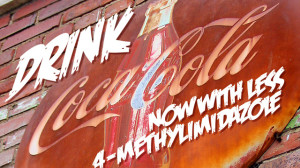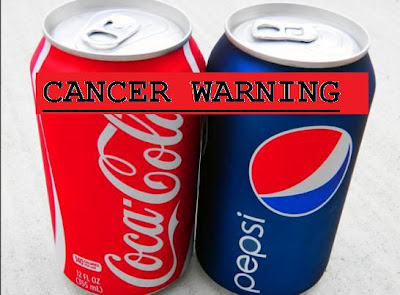Ever wonder how your “Coke or Pepsi” soda got it’s dark brown/black color? It actually comes from an ingredient often listed as “caramel coloring” …which isn’t so good for your health!
What Is Caramel Color?
Caramel coloring is the result is a burnt sugar and is the world’s most widely consumed (by weight) food coloring ingredient. It is not found only in colas, but also in sauces, gravies and baked goods.

Caramel Color Ingredients
The main concern scientists and consumers face today, is associated with the ingredients found within caramel color that form as a bi-product during processing. Recently (January 2014), The Food and Drug Administration (USA’s Health Regulatory body) started reviewing the literature and on Caramel Coloring in response to a study by Consumer Reports that showed varying levels of 4-methylimidazole – an impurity formed in some caramel coloring at low levels during the manufacturing process – in 12 brands of soda from five manufacturers.

Image Source: http://gizmodo.com
What is 4- MEI?
Though studies have to been conclusive about whether 4-methylimidazole is a carcinogen, California includes it on the state list of carcinogens and a state law mandates a cancer warning label on products that have a certain level of the substance. In reaction to that law, Coke, Pepsi and other soft drink makers have directed their caramel-colour suppliers to reduce the levels of 4-methylimidazole. Note however that It is not found in all caramel coloring’s.
Caramel Color Dangers
Why is this bad? It comes down to quantity consumed. Canadians consumed 3.5 billion liters of soft drinks in 2009, about 105 litres per person. What’s worse, is the Centre for Science in the Public Interest estimated that the caramel color in coke “Coke and Pepsi products” tested is causing about 15000 cancers in the U.S. population a year.

The World Health Organization’s International Agency for Research on Cancer has listed the chemical as being a possible cancer causing agent, while the State of California – under California’s Proposition 65 law – has placed a limit on the amount of caramel color that can be added to foods and beverages (29 mg), before a health-warning label must be applied to the manufacturer’s packaging. Unfortunately, it’s hard to keep tabs on the exact quantities these companies are putting in soft drinks, and studies are finding levels higher than 29 mg in one too many products.
So how can you avoid these harsh ingredients? It’s best to just limit the amount of soda you are consuming, or try to seek alternative options. Try looking on the label and avoiding the soda which has “caramel coloring” listed as an ingredient.



